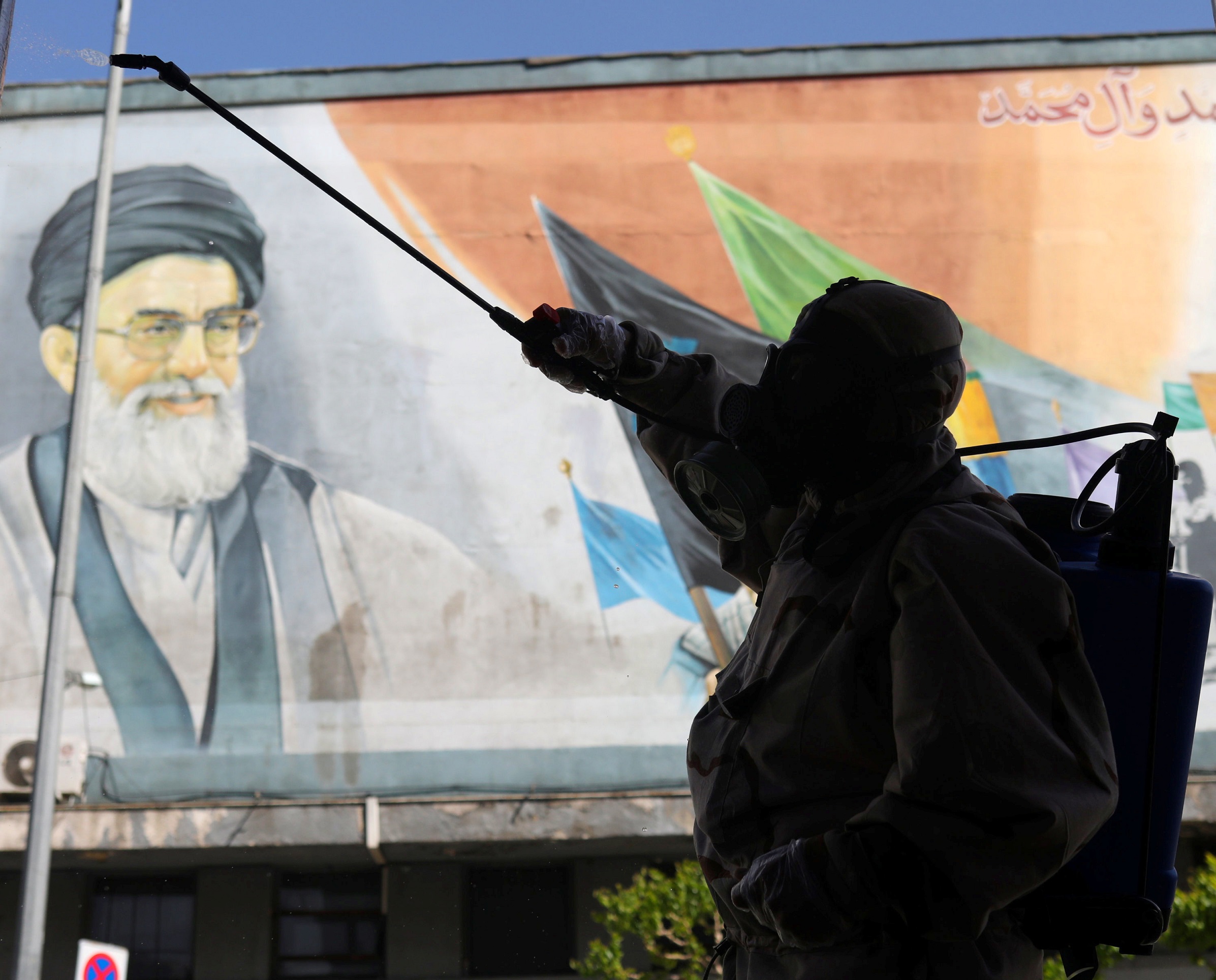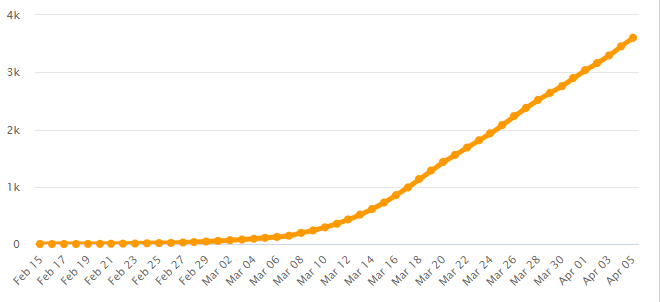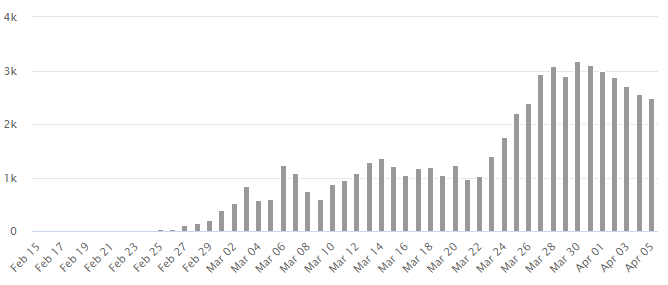Publications
INSS Insight No. 1296, April 7, 2020

The outbreak of the coronavirus dealt a harsh blow to the Iranian economy, which had already fallen to a record low point in the wake of economic sanctions imposed by the United States and the decline of oil prices. The economic impact of the pandemic is particularly severe because it harms sectors that were less affected by the sanctions. The regime is currently attempting to contain the economic crisis and supply immediate solutions for citizens, primarily in the form of assistance packages for the needy. Tehran is trying to gain relief from the sanctions, but in the meantime has been forced to ask the International Monetary Fund for a loan. As yet there are no signs of systemic economic collapse, shortages of essential goods, or the suspension of the regular supply of critical goods and services. At the same time, the deeper the pandemic crisis becomes, the more likely it is that the recession in Iran will worsen and that the budget deficit will grow significantly. In that case, Iran will likely be hard-pressed to fund its military activity in the regional arena for some time.
The COVID-19 crisis reached Iran at one of the most difficult periods in its history. The withdrawal of the United States from the nuclear deal and the renewed imposition of economic sanctions aggravated the existing distress in Iran, and the economic situation deteriorated to a record low. A sharp decline in the price of oil made matters worse. Restrictions on international trade seriously diminished imports of raw materials into Iran and harmed its ability to export non-oil products. The cessation of flights to and from Iran and the closure of its land borders in the wake of the coronavirus outbreak have also imposed a heavy economic price, particularly the closure of the crossings between Iran and Iraq, which Iran used to export essential goods and apparently to smuggle oil and evade the sanctions regime as well.
The Iranian economy is thus experiencing a particularly critical period after several months when it appeared to be stabilizing, once it adjusted to the sanctions regime. The inflation rate dropped over the last few months to about 35 percent, after increasing dramatically over the past two years, having peaked at around 40 percent. At that time the International Monetary Fund (IMF) predicted that real growth in Iran was likely to resume at a rate of up to one percent, perhaps due to increased economic activity in market sectors not based on oil. For example, over the past year a 20 percent increase in non-oil exports was recorded. This recovery was also seen in the stabilization of the local currency (the rial) at around 120,000 rials to the US dollar, after it collapsed in 2018 and lost around two-thirds of its value. In the last few months the rial weakened once again, and since the coronavirus outbreak it is trading at about 160,000 rials to the dollar.
The pandemic likewise threatens economic sectors that were not significantly affected by sanctions, such as tourism and domestic trade. The damage to these fields is particularly serious because the outbreak took place in March, just prior to Nowruz, the Iranian New Year , which is a peak period for business and consumer activity. The severity of the crisis is felt among both private citizens and businesses. The head of the Iran Chamber of Commerce, Gholam-Hossein Shafe'i, warned shortly after the outbreak began that Iran was headed for a wave of bankruptcies. The crisis caused serious harm to several industries, including the automotive industry, which faces a steep decline in demand for vehicle purchases alongside export restrictions.

The regime is currently trying to contain the economic crisis. President Hassan Rouhani sought to calm the public by announcing that there is no danger of shortages of goods or medicine, and that the government is endeavoring to offer immediate solutions. The government authorized an assistance package to three million citizens who lack steady income, including $400 allocations in three payments to be paid out over the course of four months, as well as interest-free loans to four million workers who have lost income as a result of the crisis. Commercial banks were instructed to offer low-interest loans for 30 months to ten categories of businesses that have been particularly affected by the crisis, including restaurants, travel agencies, hotels, transportation and aviation companies, fitness and entertainment centers and event planners. The government also intends to raise government workers' wages by 50 percent and postpone tax and interest payments until May. In any event it appears that the aid program will only add up to one or two percent of Iran's GDP, which demonstrates the financial weakness of the government.
At the same time, the regime launched a broad international campaign to pressure the United States to lift its sanctions, although the American government has insisted that it does not intend to reduce sanctions or relax its "maximum pressure" strategy. It even announced a new set of sanctions against Iranian companies and individuals. The European Union, in contrast, approved 20 million euros in humanitarian assistance to Iran. It also recently carried out a transaction to bring medical equipment to Iran, the first transaction via the INSTEX mechanism for circumventing American sanctions. The Chinese government has also offered expertise and equipment. At the same time the Iranian authorities were compelled to appeal to the IMF – for the first time since the Islamic Revolution – for a loan of $5 billion from the Rapid Disbursing Emergency Financing Facilities, which was established in order to assist states in handling the COVID-19 crisis. At the time of this writing it is not yet clear whether the United States will allow Iran to receive the loan.
These initiatives were intended to help Iran manage its severe deficit. The Iranian budget for the new year, which was presented to Parliament for approval in November 2019 and recently approved by the Guardian Council, , will most likely require far-reaching changes in light of the extraordinary expenses and the expected decline in tax income caused by the COVID-19 crisis. Falling oil prices will also influence the budget, which was based on a projected price of $50 for a barrel of oil, particularly given that Iranian oil exports have reached an unprecedented low of fewer than 400,000 barrels a day due to American sanctions. The global decline in the demand for oil caused by the coronavirus and the oil war between Saudi Arabia and Russia has led to a sharp price drop. A barrel of Brent oil, which was traded for $60 at the end of January, was being sold for just $25 by the end of March – the lowest price since 2003. The price decline, combined with the decrease in Iranian exports caused by US sanctions, weighs heavily on the Iranian economy. In an attempt to mitigate the deficit President Rouhani appealed to Supreme Leader Ali Khamenei in late March to allow a withdrawal of reserves from the National Development Fund, which was created to maintain a portion of oil revenues in order to prevent shocks caused by price changes on the world market. The crisis is also expected to further reduce Iran's foreign currency reserves, which in late 2019 were estimated to be approximately $86 billion.

The regime's difficulty in withstanding the severe economic situation, and its need to ensure the income of millions of state workers and guarantee the regular supply of essential goods and services, has caused a noticeable delay in enforcing closure and movement restrictions across the country in response to the coronavirus outbreak. For several weeks President Rouhani refused to impose a full lockdown in spite of the demand by the Ministry of Health to do so, although he did call on citizens who do not work in essential services to remain in their homes, imposed restrictions on some economic activity, and announced the closure of commercial centers, markets, cultural and recreational centers, some government offices, schools, and universities. Only in late March after efforts to halt the spread of the pandemic failed did the government impose significant restrictions on the movement of vehicles and citizens between urban centers across the country.
It is too early to assess the extent of the financial damage in Iran, which to a large extent will depend on how the crisis plays out. In any event the economic crisis is expected to continue after the health crisis, and to exacerbate the existing poverty and economic plight suffered across much of the society. This in turn is likely to renew popular protest, which is currently restrained due to fears of COVID-19 infection that might be caused by congregating in the streets. The Iranian economy, which the IMF expected to decrease in 2019-2020 by more than 9 percent, is likely to enter a severe recession or worse. This recession will probably further deepen the unemployment crisis, which stands today at some 13 percent overall and at over 40 percent for young university graduates.
Nonetheless, no systemic economic collapse is evident at this stage, and there are no signs of a lack of essential goods or a loss by government authorities of the ability to ensure regular supply of essential goods and services such as electricity, water, and gas. It appears that production abilities in most areas of agriculture and industry have been maintained in spite of the ongoing crisis. Furthermore the Iranian regime has already proven its ability to overcome grave crises, including years of significant economic sanctions, in part in light of the centralization of the Iranian economy, which is characterized by extensive involvement by government institutions and by the Revolutionary Guards. This centralization improves the regime's ability to adjust the economy to the new conditions created by the crisis. The deeper the crisis becomes, the more the Iranian authorities will need to reassess the situation and reorder national priorities. Although it is unlikely that its strategic aims will change, Tehran will probably be hard-pressed to finance some of its military activity in the regional arena. Iran has already been compelled by the renewal of American sanctions two years ago to reduce its support for particular organizations in the Arab world, including Hezbollah, which is facing severe economic distress. The damage done to Iran is likely to further restrict its abilities to assist its proxies in the region.


